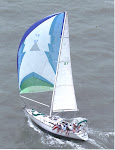






Athens is a treasure for all of the Western world since this is where it all began. One could spends months or years in Athens absorbing the history and enjoying the contemporary scene. However, for ordinary folk such as Jan and I three days was quite enough. We suffered from 'wonder fatigue.' After a while one marvel just blurs into another. The first sign of wonder fatigue is when all of the ancient clay pots start to look alike.
Our stay started with a jarring note. We booked into the Chic Hotel in the Omonia district at a ridiculous rate of 60 euros per night for a 4 star hotel. The Omonia is a gritty neighborhood roughly equivalent to Times Square in New York. Walking back too late at night we had to dodge homeless settling down to sleep in store fronts, but we were never threatened. I jokingly asked the night clerk if there were going to be any demonstrations. She said, "yes, tomorrow in Omonia Square." There was also a general strike called to protest pension reform. We had to go! There were loud loudspeakers, militant anthems, strident speeches (in Greek), and waving red flags with numerous hammer and sickle signs of the local KKE. It was all so quaint and reminded me of my hippie days in the 60's during the anti-war protests. We did not want to stick around for the rough stuff, so we hiked down Athina Street about a mile to the Agora.
The Agora was roughly downtown Athens during the Classical period and Roman occupation. Before that it was a cemetery for ancient Athenians. It carried on into the Christian era but then was abandoned for centuries. Later it became a slum of modern Athens. The quarter was razed and excavated in the 1950's with the assistance of the American Rockfeller Institute. The Agora today is about 100 acres of lovingly excavated ruins. These are undoubtedly the very grounds that Socrates walked and shopped (agora means market). Somewhere within these grounds the very foundations of our society were argued and codified.
The pictures show some typical ruins, a very beautiful clay pot perfect after 2600 years, the temple of Hephestus, and Jan hanging with Athena at the site's wonderful museum. We explored an ancient Greek Orthodox Church. Finally there is a view of the Acropolis from the Agora. This was the skyline the Athenians saw every day and it must have influenced their world view in 430 BC. That was the year they voted to make war with Sparta and started the centuries of decline.

















